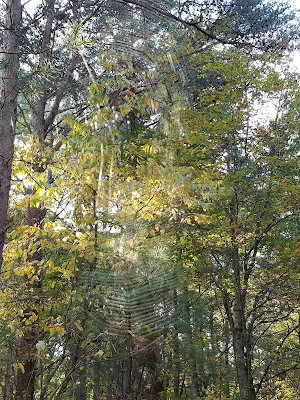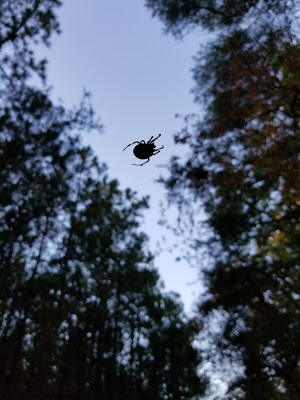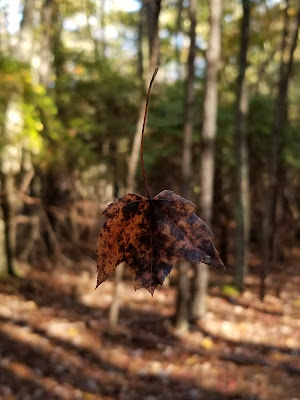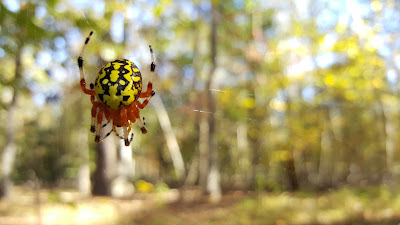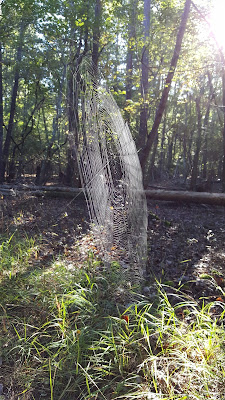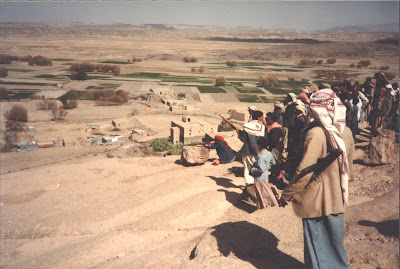When it comes to hobbies, I am multifarious. My mother always complained that I knew a
little about too many things: “A Jack of all trades, master of none.” My mother was probably correct. This is why our home is such a mess, there is always so much going on in our lives; but I guess that keeps life interesting. We hardly have any time for TV watching. I wrote about this a little bit in 2015, but after this weekend it is time to revisit this subject.
My hobbies include nature and forest bathing, sailing, photography, bonsai, hiking and biking, to name a few. This past weekend was Thanksgiving weekend and our daughter was visiting, which meant some intensive walking in the woods, or as we know it “#optoutside.” Optoutside was started by an outdoor outfitter company as their answer to the shopping craze of Black Friday, where (I think) half of the U.S.A. goes absolutely crazy and goes shopping for deals and for Christmas gifts. So, on Friday and Saturday morning we did a 3-mile walk in the woods, before lunch.
The two walks were a great excuse for me to combine a few of my hobbies: hiking, bonsai growing, photography, nature and forest bathing. The forest bathing part sometimes had to play second fiddle, my company became impatient at times with me lingering in the woods and taking it all up. But I did have some time to assimilate it all, especially when they took our older dog on a shorter path home and I was allowed to take the longer trail with the younger dog.
 |
| During our walk I encountered this dead tree that was infested by termites and obviously, the woodpeckers had discovered them as well. |
I am trying to grow bonsai. I wrote about that before, as well. Some of my trees are as old as my daughter; they were started from seed by a friend of mine who was a native plant grower 30 years ago. They are not perfect at all; I have ignored them for a long time and am finally getting back into them in the past 3 years or so. They were root bound and in horrible shape; I am surprised that they survived my abuse (read neglect) for that long. Some of my best specimens did die the 30 years of moving from New Mexico to Ohio and now the last 17 years in Virginia. Since getting back into it, I have been following a few YouTube channels and blogs about growing them and learned a lot (I will post a list of the ones I follow below).
One of my favorite channels is the one of Nigel Saunders. Nigel is very strong on developing a good evenly spreading root system and he encourages people to study the plants they grow in nature and try to copy them. So, this weekend I spent a lot of time taking pictures of the bases of trees and studying how the roots come out of them (I also wrote about them before in that previous bonsai blog and in one specifically about roots).
 |
| One of my favorite examples of a well spread root system on an American beech. There were lots of nice examples to look at during our walk. |
 |
| Last, a study photo of the branch structure in one of the trees during my walk. Maybe something I can try to copy in the design of one of my trees. |
Now for some of the YouTube channels that I follow:
Nigel Saunders
MikBonsai (he also has a great Facebook page)
Appalachian Bonsai
Bonsai Talk
Bonsai & Killifish
Blogs that I follow:
Adam Levine (he has a great Instagram page)
Flemish Bonsai Blog
Robin Bonsai
Maros Bonsai Blog
I also love the work that Harry Harrington does.




